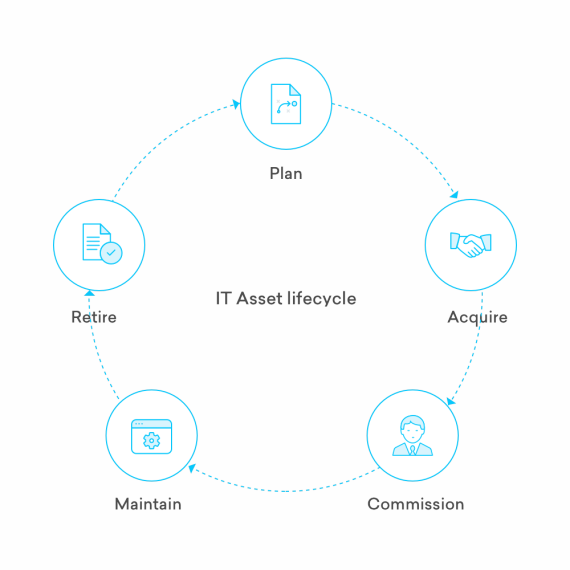What is IT Asset Management?
According to the International Association of IT Asset Managers (IAITAM), IT Asset Management (ITAM) is “a set of business practices that incorporates IT assets across the business units within the organization. It joins the financial, inventory, contractual and risk management responsibilities to manage the overall life cycle of these assets including tactical and strategic decision making”. Assets include all elements of software and hardware that are found in the business environment.
IT asset management is sometimes referred to as IT inventory management because it typically involves gathering detailed hardware and software inventory information which is then used to make decisions about purchases and how assets are used. Having an accurate IT asset inventory helps companies use their assets more effectively and avoid unnecessary asset purchases by re-using existing resources. IT asset management also enables organizations to lower the risks costs of unknowingly building new IT projects on outdated (or unknown) infrastructure foundations.
IT Asset management is made effective using metadata and electronic records to track and categorize the organization’s assets. Metadata is the description of the physical or digital asset and any supporting information that is needed to inform asset management decisions. The metadata depth can vary depending on the needs of the organization.
Let us now deep dive into following areas:
- Type of ITAM
- Asset Lifecycle
- Asset management tool
- Service tracking
- Benefits of ITAM
- Standards


What is the IT Asset Lifecycle?
Assets are things that have a finite useful life. To maximize the value generated for the company, asset management processes use the concept of an asset lifecycle to structure activities and support decision making.
As discussed above, each type of asset management function within an organization may have their own definition for the lifecycle stages and information that they care about, but whether you are talking about buildings, equipment or software, the underlying cycle is the same. Asset management is the systematic process of developing, operating, maintaining, upgrading, and disposing of assets cost-effectively.
In the context of IT asset management, the asset lifecycle is often structured as:
Why is Asset Management Important for IT?
IT organizations manage a large proportion of the company’s total asset footprint. IT assets are both costly to acquire and to maintain. As a result, asset management plays a critical role in helping IT teams to ensure efficient use of the organizations resources in supporting the needs of users and business functions.
Gartner defines IT Asset Management (ITAM) as: “providing an accurate account of technology asset lifecycle costs and risks to maximize the business value of technology strategy, architecture, funding, contractual and sourcing decisions.” This definition highlights that IT Asset Management isn’t just about inventorying assets, it about using the information that is captured to drive decisions. Increasingly, IT organizations are focusing on the usability and informational value of IT asset data to drive business value instead of just focusing on data quantity and accuracy.
Here are some of the key goals of asset management in IT:
- Enforce compliance with corporate security policies and regulatory requirements
- Improve productivity by deploying the technology to support user and business needs
- Reduce licensing and support costs by eliminating or reallocating underutilized resources and licenses
- Limit overhead costs of managing the IT environment
Types of IT Asset Management
Asset Management is a broad term and can mean a lot of different things. Here are some of the most common types of asset management that are often present in IT organizations
IT Asset Management
Is the overarching set of business practices that join financial, contractual and inventory functions to support life cycle management and strategic decision making for the IT environment. ITAM is part of a company’s IT Service Management function.
Digital Asset Management
is a part of the company’s intellectual property management functions and is a form of electronic media content management concerned with managing digital assets such as photos, videos, and digital data that the company either produces or licenses from third parties.
Software Asset Management and License Management
are concerned with the effective management, control and protection of software assets. This includes those produced by the company and those licensed from 3rd parties to ensure that all software in use within the organization is properly paid for and in compliance with licensing agreements.
